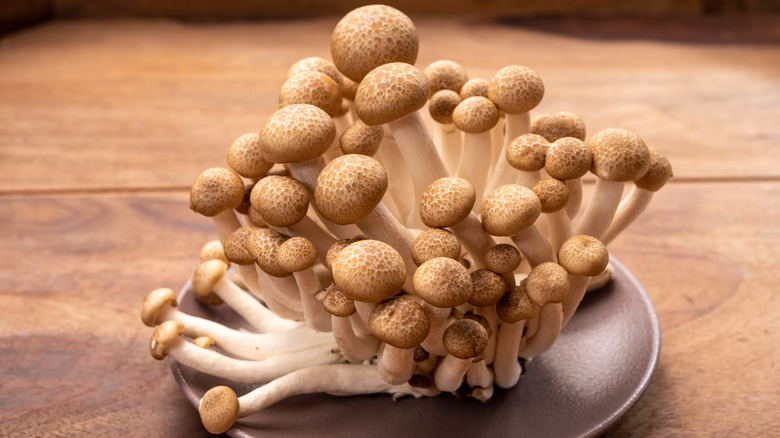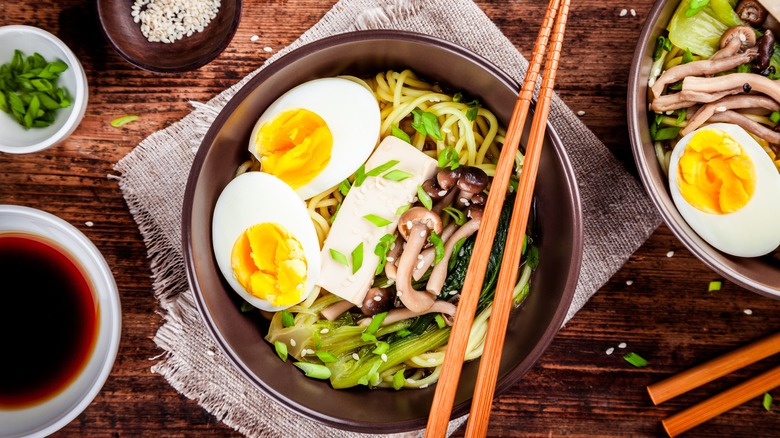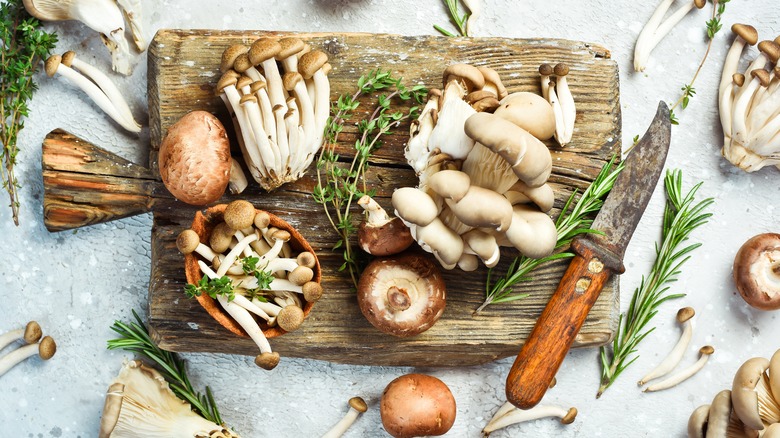The Asian Mushrooms That'll Bring You The Perfect Amount Of Umami
We may receive a commission on purchases made from links.
Chances are if you are dining out at a Japanese restaurant, "umami" is often used to describe many of the dishes. Unami is one of the five taste groups, in addition to sweet, sour, salty, and bitter. The word "umami" means "pleasant savory taste" in Japanese, and has been a descriptor for broth-dense or meaty dishes. While you can add soy sauce, monosodium glutamate (MSG), miso paste, or seaweed to recipes for an umami flavor, some ingredients have natural umami, such as shimeji mushrooms.
If you take one look at shimeji mushrooms, they look like the typical wild mushrooms that you would find on your hike, due to their long stems and spherical caps. But the edible fungus packs huge flavors. Shimeji mushrooms, or beech mushrooms, are a common ingredient in Japanese cuisine. These mushrooms are an easy way to incorporate an extra punch of umami into nearly any dish.
How to cook shimeji mushrooms
There are actually over 20 different species of shimeji mushrooms, but the most commonly used ones are white and brown shimeji mushrooms. The mushrooms naturally have a savory, bitter, and, of course, umami taste. However, cooking them will eliminate their bitterness. Shimeji mushrooms hold a variety of health benefits. They are high in fiber, protein, and potassium, according to MasterClass.
Shimeji mushrooms are versatile and can be added into nearly any recipe. Adding the mushrooms to meat-heavy dishes only enhances the flavors. Incorporate them into any rice and noodle dish as well as a stir-fry. Try sautéing them in oyster sauce, soy sauce, and ginger for an Asian-inspired dish. Or you can add them to kitsune udon or in a fried Japanese udon noodle dish. The mushrooms also work well in ramen, hot pot, stew, or a Japanese omelet rice dish with shiitake mushrooms. However you prefer to whip up shimeji mushrooms, always try to cook them thoroughly — raw shimeji mushrooms are hard to digest.
Store the mushrooms properly
Shimeji mushrooms are available year-round. They can be found at Asian grocery stores in plastic-wrapped containers. Try to buy dry and firm ones and avoid mushrooms that look slimy and soggy. Once you get your hands on shimeji mushrooms, MasterClass recommends gently washing them to get rid of any dirt. Let them air dry before cooking the mushrooms.
If you have any leftover shimeji mushrooms, be sure to use them as quickly as possible. Once opened, the mushrooms are good to use for up to five days. Wrap them and store them in the fridge. However, you should not freeze shimeji mushrooms.
Can't find shimeji mushrooms? You can easily substitute in oyster mushrooms, shiitake mushrooms, or straw mushrooms. Oyster mushrooms, in particular, also are known for their umami flavors. In addition to a nutty flavor profile, like shimeji mushrooms, oyster mushrooms have a slight seafood–like taste. Better yet, why not whip up an umami-filled dish using all of these mushrooms?


